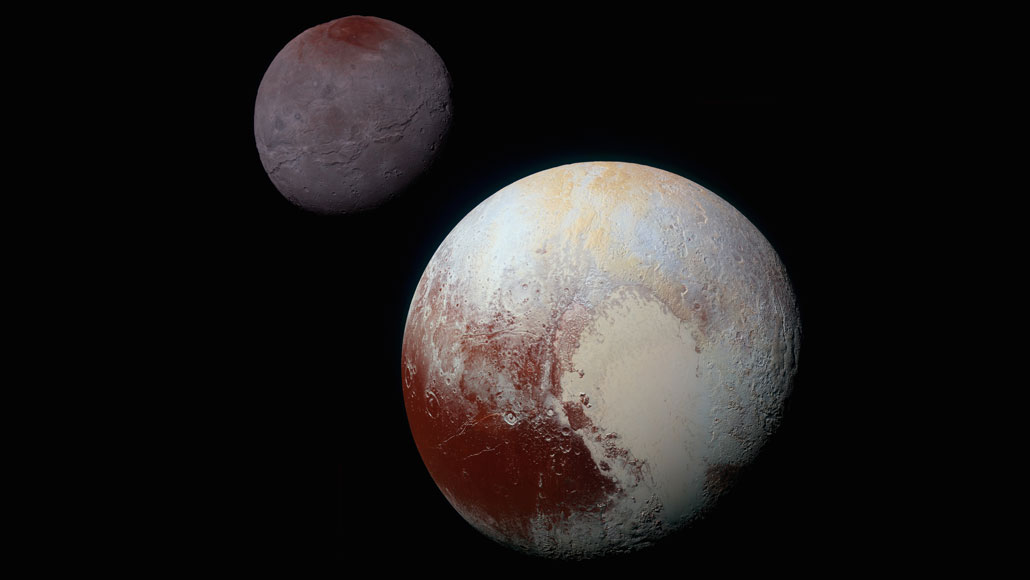50 years ago, astronomers were chipping away at Pluto’s mass
Excerpt from the August 28, 1971 issue of Science News

Throughout the 20th century, estimates for the mass of Pluto (right) kept getting smaller. The discovery of Pluto’s moon, Charon (left), helped settle the dwarf planet’s size.
NASA, JHUAPL, SwRI








